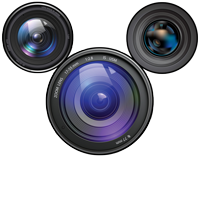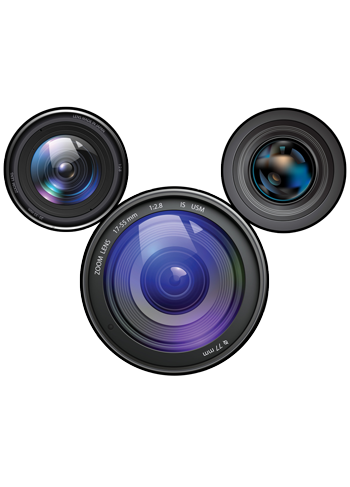
Disney’s Evil Queen and her Magic Mirror ~ Joanie Eddis-Koch
This incarnation of the Evil Queen popped up on the back of a Halloween parade float during Mickey’s Not So Scary Halloween Party. This parade is very difficult to photograph because of the constant movement and poor lighting. In this shot we see the Queen illuminated by an uncomplimentary spotlight which brings out all her evil flaws and wrinkles. This poor lighting is putting the Magic Mirror in a tough spot because shortly it will be asked “Who is the fairest one of all?” and with this awful ‘up lighting’ it’s certainly not going to be the Evil Queen!
This shot was captured using a Nikon D4. The shutter speed was 1/160 and the aperture was wide open at f 2.8. The lens was a Nikon 24-70mm lens set to 70mm. The ISO was set to 8000 in Auto ISO mode. Metering was set to Spot to avoid blowouts from the super bright spot lighting that is used for these parade floats.
For shooting these parades the most important consideration is setting your camera to shutter priority mode. You don’t want the shutter speed to go below 1/160 and it probably would be better to keep it up around 1/200 to prevent motion blur. All of these calculations are based on using a lens like the 24-70mm f2.8 lens I was using here. This parade is difficult to shoot because it takes place at night and for the most part the performers are poorly lit, or they are only lit from the ambient light on the street. You also have the conundrum of constant movement in these darkened conditions. Understanding these conditions and knowing how to set up your camera is the first key to success.
The Auto ISO feature is a great thing to have on a camera. On my D4 I can set the range of ISO’s that I want the camera to shoot in. Then, based upon the ever changing light conditions, the camera chooses the best ISO speed based on feedback from the meter and the camera settings (shutter speed and aperture). My only regret about this set up is that I wish the Auto ISO feature was as fast at adapting to the changing light conditions as a system like the auto focus on the Nikon D4. Sometimes there is a lag when you change quickly from shooting a darker area to a lighter area and vice versa. This can result in over or under exposed shots.
The fact that one can capture amazing shots during this “dark” parade is a testament to the technological advances of the DSLR’s of today. I very much enjoy the challenge of trying to capture the enchanting performances by the characters in this parade. This type of experience challenges me to get all I can out of my camera equipment. Under these shooting conditions it’s virtually mandatory that you do that!
~Joanie Eddis-Koch
https://www.flickr.com/photos/marlton-mom/



 (7 votes, average: 4.71 out of 5)
(7 votes, average: 4.71 out of 5)
Your write-up’s are always the best!